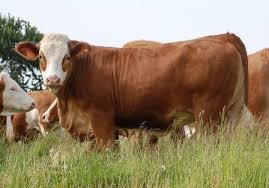Vitamin D Deficiency in Livestock

Vitamin D Deficiency can lead to significant health issues in livestock, including Rickets in growing animals and Osteomalacia in adults. Both conditions are related to poor bone mineralization and can impact the overall health and productivity of the animals. This guide provides a comprehensive overview of Vitamin D deficiency, including affected species, symptoms, prevention, and treatment strategies.
What It Is
Vitamin D Deficiency occurs when livestock do not receive sufficient amounts of Vitamin D, which is essential for calcium and phosphorus metabolism. Vitamin D helps in the absorption of calcium and phosphorus from the diet, crucial for maintaining healthy bones and overall skeletal integrity. Deficiency in Vitamin D can result in impaired bone mineralization, leading to conditions such as Rickets in young animals and Osteomalacia in adults.
Species Affected
- Cattle: Both beef and dairy cattle can be affected by Vitamin D deficiency, especially when confined indoors with limited sunlight exposure or when grazing on pasture with low Vitamin D content.
- Sheep: Vitamin D deficiency can lead to Rickets and Osteomalacia in sheep, impacting growth and reproductive performance.
- Goats: Similar to cattle and sheep, goats can suffer from Vitamin D deficiency, leading to bone deformities and weakness.
Symptoms
In Growing Animals (Rickets):
- Bone Deformities: Abnormal bone development, including bowed legs, deformities of the ribcage, and a soft or pliable skull.
- Weak Bones: Increased susceptibility to fractures and difficulties with weight-bearing.
- Lameness: Difficulty moving or standing due to bone pain and weakness.
- Delayed Growth: Stunted growth or failure to reach normal size and weight.
In Adults (Osteomalacia):
- Weak Bones: Softening and weakening of bones, leading to increased risk of fractures and joint issues.
- Lameness: Difficulty moving, often due to pain in the limbs or joints.
- Decreased Productivity: Reduced milk production in dairy cattle or decreased reproductive performance.
Prevention Strategies
Preventing Vitamin D deficiency involves ensuring adequate Vitamin D intake and exposure:
- Sunlight Exposure:
- Outdoor Grazing: Allow animals to graze outdoors whenever possible to ensure exposure to natural sunlight, which helps in the synthesis of Vitamin D in their skin.
- Sunlight Access: Provide access to outdoor areas with sufficient sunlight, especially for confined animals or during winter months.
- Dietary Management:
- Vitamin D Supplements: Include Vitamin D supplements in the diet, especially if animals are confined indoors or have limited access to sunlight. Common forms include Vitamin D3 (cholecalciferol) in feed or mineral supplements.
- Fortified Feeds: Use feeds that are fortified with Vitamin D to ensure adequate intake.
- Balanced Ration:
- Calcium and Phosphorus Balance: Ensure that the diet includes adequate calcium and phosphorus levels, as Vitamin D works in conjunction with these minerals for bone health.
- Nutritional Assessment: Regularly assess and adjust diets based on the needs of the livestock and the nutritional content of available feed and forage.
- Monitor and Adjust:
- Regular Health Checks: Monitor livestock for signs of Vitamin D deficiency and adjust feeding practices or supplementation as needed.
- Forage Quality: Ensure that forage quality is sufficient and includes necessary vitamins and minerals.
Treatment Strategies
Treating Vitamin D deficiency involves correcting the deficiency and managing symptoms:
- Vitamin D Supplementation:
- Injectable Vitamin D: Administer Vitamin D injections for rapid correction of deficiency, especially in severe cases. This should be done by a veterinarian.
- Oral Supplements: Provide oral Vitamin D supplements or fortified feed to address deficiencies over time.
- Dietary Adjustments:
- Enhanced Diet: Adjust the diet to include more Vitamin D-rich feeds or supplements, ensuring that livestock receive adequate levels moving forward.
- Balanced Nutrition: Ensure that the diet provides a balanced ratio of calcium and phosphorus along with Vitamin D.
- Supportive Care:
- Bone Health Management: Provide supportive care to manage symptoms, including addressing lameness and promoting mobility. Ensure comfortable housing and reduce stress on affected animals.
- Veterinary Assistance: Consult a veterinarian for a thorough evaluation and treatment plan, particularly if symptoms are severe or persistent.
- Environmental Management:
- Improve Sunlight Exposure: Increase sunlight exposure for confined animals where feasible. Use ultraviolet (UV) lamps if natural sunlight exposure is limited.
By implementing these prevention and treatment strategies, you can effectively manage Vitamin D deficiency and mitigate the risks of Rickets and Osteomalacia in your livestock, ensuring better health and productivity.
For more information and support on livestock health and nutrition, visit LivestockWellness.com.